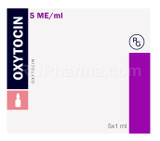Description
Reviews
Additional Info
Description
PROPOFOL is a fast-acting intravenous anesthetic agent used for the induction and maintenance of general anesthesia, procedural sedation, and sedation in intensive care settings. It is known for its rapid onset and short duration of action, allowing for quick patient recover.
USES
- Induction and maintenance of general anesthesia in adults and children.
- Procedural sedation for diagnostic or minor surgical procedures.
- Sedation of intubated, mechanically ventilated patients in intensive care units.
- Off-label: Treatment of refractory status epilepticus and refractory postoperative nausea and vomiting.
GUARANTEE & EXPIRY DATE
100% original from various Austria pharmaceutical manufacturers. Product photo may vary. All packs are air tight sealed and expire up to 01.2029.
DESCRIPTION
Propofol, chemically known as 2,6-diisopropylphenol, is formulated as a sterile, oil-in-water emulsion for intravenous injection, giving it a characteristic milky appearance. It is highly lipophilic, which contributes to its rapid onset of action-typically within 30 seconds-and short duration, with effects wearing off within minutes after cessation. Propofol is widely used in operating rooms, emergency departments, and ICUs because it provides predictable sedation and amnesia, with rapid recovery and minimal residual effects compared to other anesthetics. Its use requires careful monitoring due to potential respiratory and cardiovascular depression.
Propofol acts primarily as a positive allosteric modulator of the GABAAA receptor, enhancing the inhibitory effect of GABA in the central nervous system. This leads to increased chloride influx, hyperpolarization of neurons, and decreased neuronal excitability. At higher doses, it can directly activate GABAAA receptors. Propofol may also inhibit the enzyme fatty acid amide hydrolase, affecting the endocannabinoid system, which may contribute to its sedative and antiemetic properties.
Benefits:
-
Rapid onset and recovery, allowing for precise control over sedation depth and duration.
-
Lower incidence of postoperative nausea and vomiting compared to other anesthetics.
-
Minimal residual sedation, facilitating quick patient turnover and discharge.
Read further: https://en.wikipedia.org/wiki/Propofol
PACKAGING & DOSAGE
One pack contains, 5 vials/pack of 20ml/vial
Active ingredient: Propofol (10 mg/mL; 1% w/v).
Excipients of the core: Soybean oil, medium-chain triglycerides, glycerol, purified egg phospholipids, oleic acid, sodium hydroxide, nitrogen, water for injection.
Dosage Recommendations:
Induction of anesthesia (adults): 1.5–2.5 mg/kg IV bolus.
Maintenance of anesthesia: 4–12 mg/kg/hr IV infusion, titrated to clinical effect.
Procedural sedation: 0.5–1 mg/kg IV bolus, followed by 1.5–4.5 mg/kg/hr infusion as needed.
ICU sedation: 5–50 mcg/kg/min IV infusion, titrated to desired sedation level.
VIDEO
SIDE EFFECTS AND PRECAUTIONS
- Respiratory depression or apnea.Pain at injection site.
- Nausea and vomiting (less common than with other agents).
- Hypotension.
- Bradcardia.
STORAGE
Store in dry place at room temperature. Do not exceed storage temperature higher than 25 degrees Celcius. Keep away from direct sunlight. Keep locked and away from children.
QUESTIONS?
Ask us any questions about Propofol.





